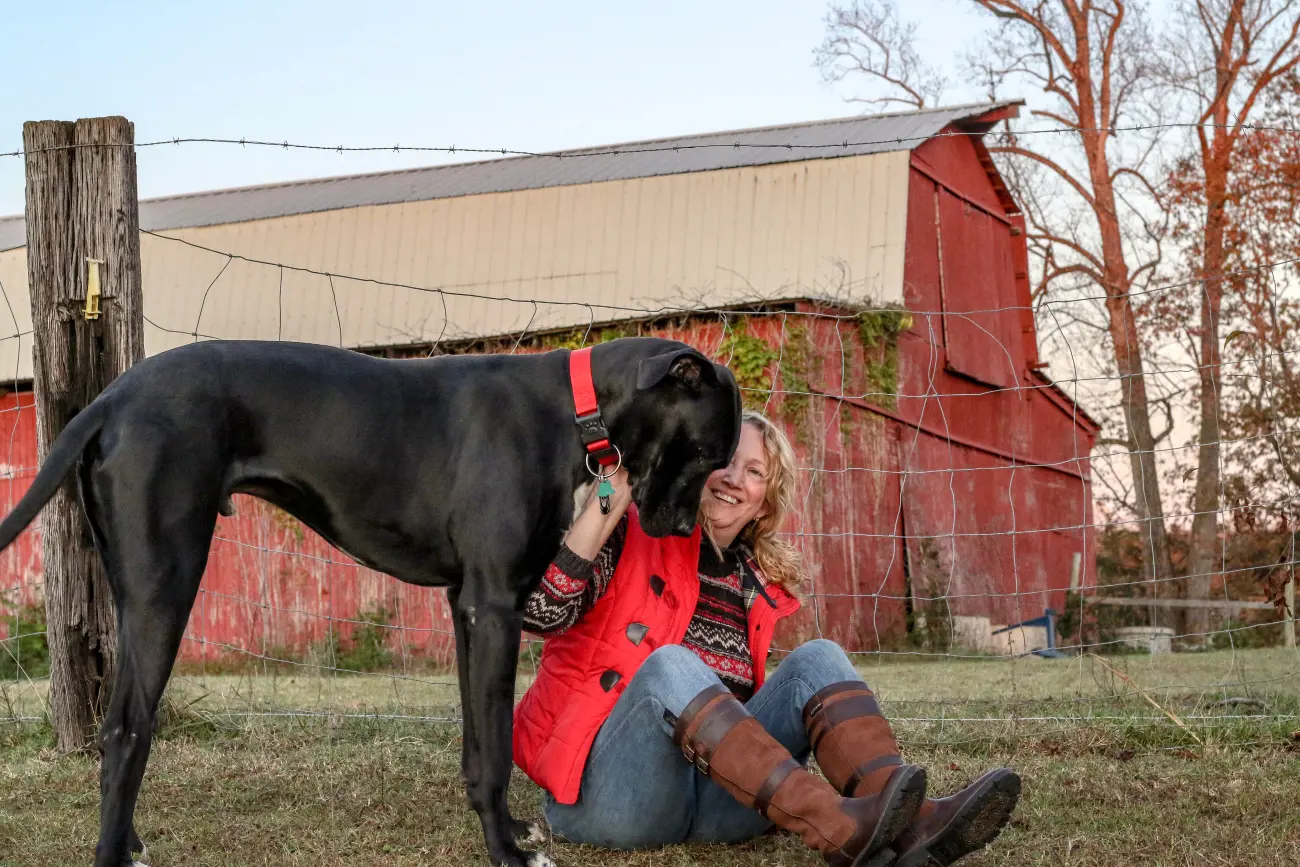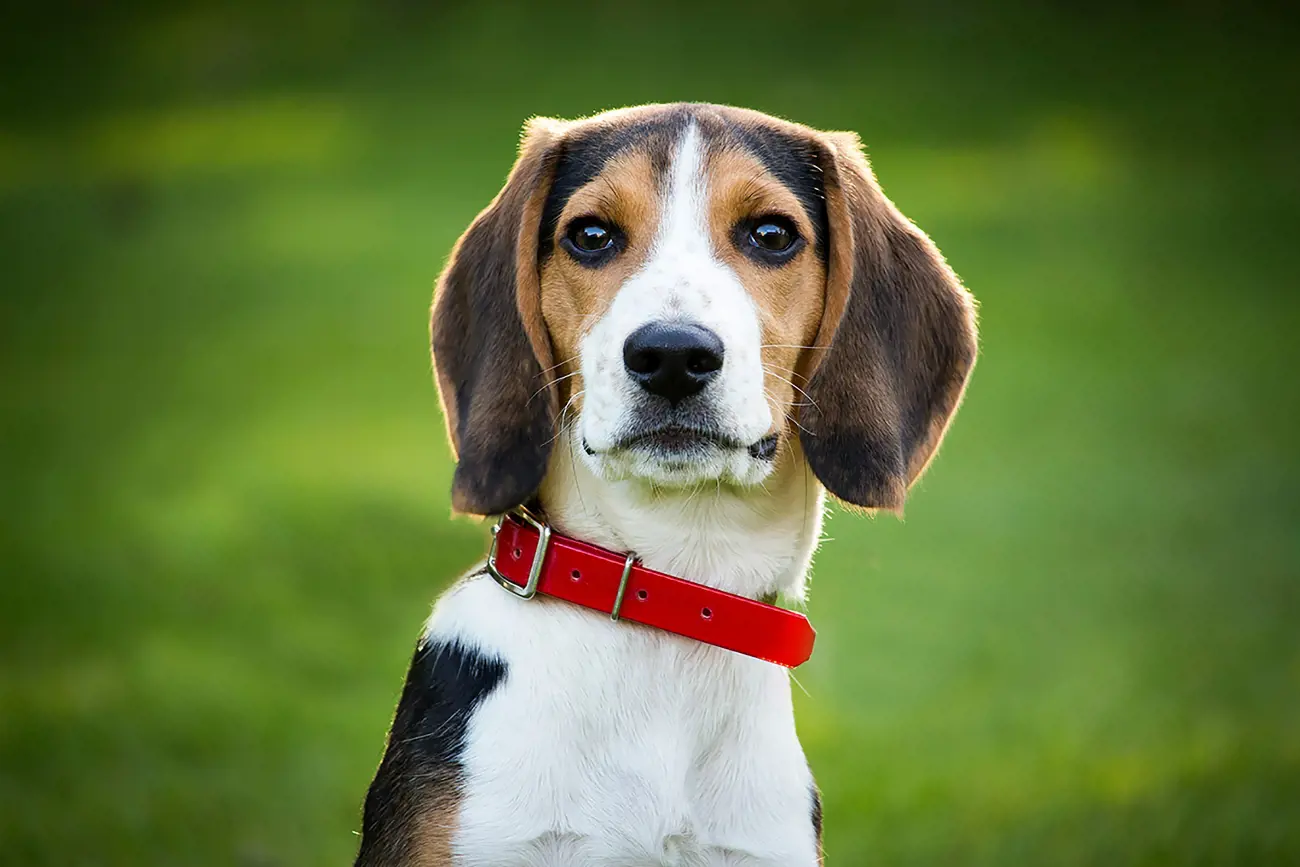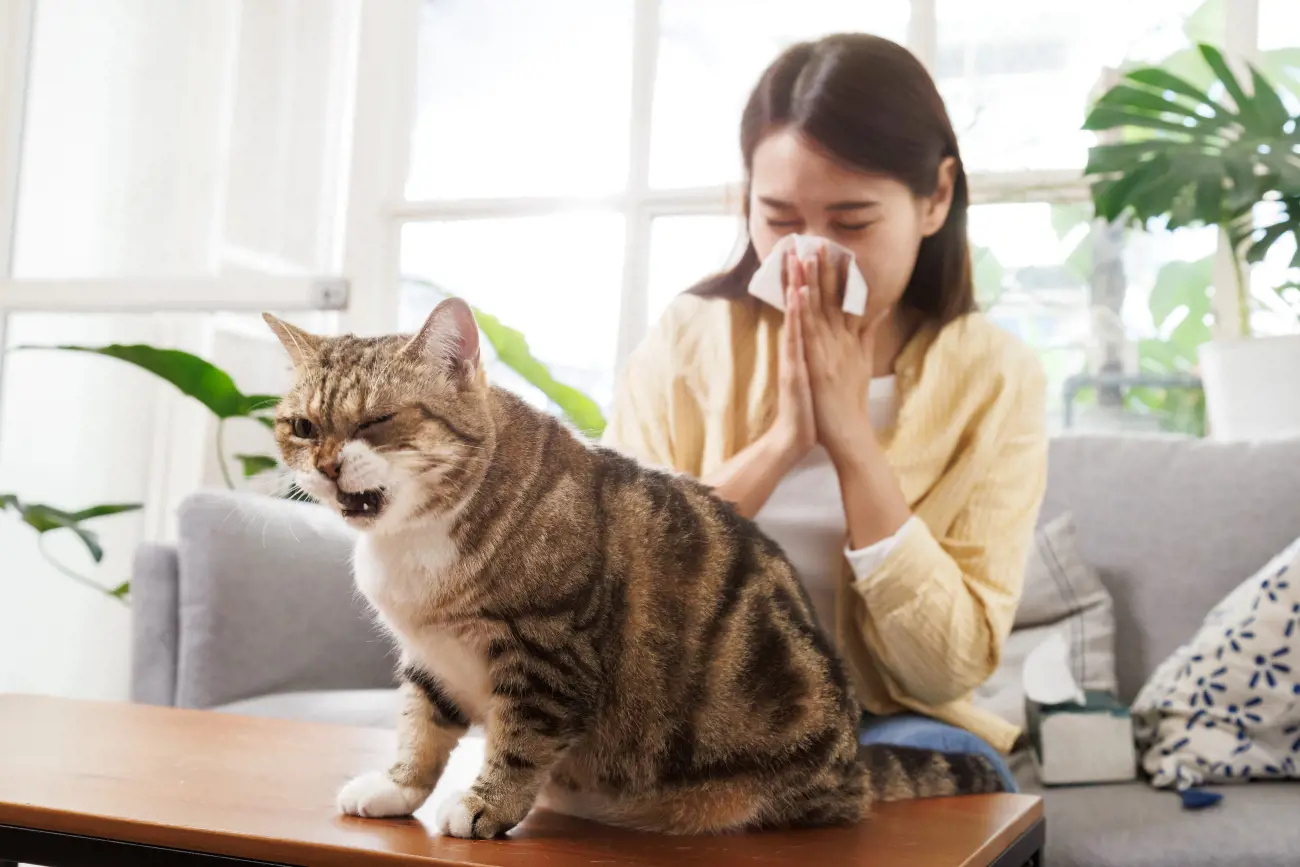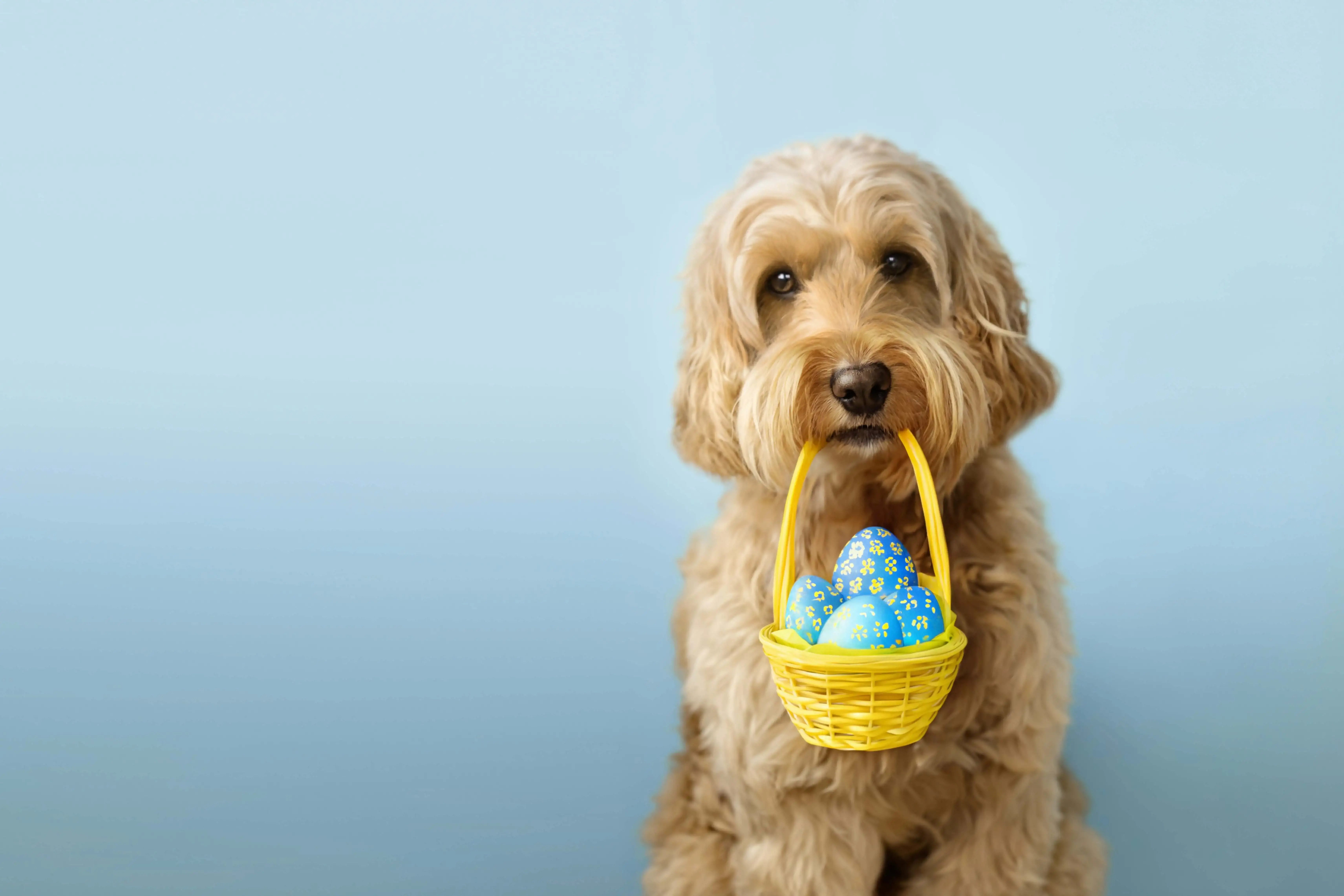Problems with dogs eyes (and cats) - What causes them?
2nd August, 2024

What is the most serious symptom with the eye?
One of the most serious symptoms of a dog's eye problem is squinting or the inability to hold the eye(s) open.
What are the four common eye problems?
- Conjunctivitis
- Eye ulcers
- Dry eye
- Cataracts
Certain dog breeds, especially brachycephalic and small breeds, are more prone to these eye problems due to their anatomical features.
How to tell if your dog has cataracts or glaucoma?
There is no way to distinguish these two diseases without further eye examinations. This would include tests like:
- Eye examination using a light source
- Assessing the pressure inside the eye
- Dye test
- Tear production test
- Blood tests to check for other illnesses affecting the body and the eyes
What does glaucoma in dogs look like?
- Cloudy or blue eye
- Red eye
- Squinting
- Sudden blindness
- Sleeping more
- Being head shy
- Tilting the head
Dog Eye Infections
What are the signs of a dog eye infection?
- Yellow, green, or clear eye discharge
- Pink or red eye
- Pawing or rubbing at the face
- Blinking more than usual or squinting
- Swelling of the tissue that lines the eyelids and the surface of the eye (conjunctiva)
If you notice any of these signs, it's crucial to seek veterinary care for your dog's eye infection to prevent further complications.
Differentiating between dog eye allergies and infection
It can be difficult to distinguish between an allergy or infection, as early signs of infection can present the same way as allergies. Keep out for signs such as:
- The duration of signs- allergies should resolve fairly quickly, a day or so.
- The type of discharge—yellow or green discharge is more related to infection.
Dog Eye Infection Treatment
General treatment includes:
- Eye cleaners, such as washes, wipes, or gels, eye drops, and lubricating/soothing treatments—gels or ointments.
- Artificial tears can also be used to alleviate symptoms associated with dry eye and other irritations.
- Prescription medicines depend on the underlying cause of the infection:
- Antibiotics- gels, ointments, drops for the eye, or oral medication.
- Steroid anti-inflammatory- drops, ointments, or oral tablets.
Can You Treat Dog Eye Infections at Home?
- Use a sterile saline solution to flush the eye
- Use a cotton ball soaked in saline to flush a few drops into the eye 2-4 times daily.
- Clean any accumulated discharge around the eye using a cotton pad.
- Sterile saline is available in pharmacies. Make your own at home with cooled-down boiled water.
- Use a buster collar on your dog
- Preventing damage to the eye is important, as pets may scratch at their eyes with their paws or rub their face on furniture.
Dry Eye Disease in Dogs
Vets call dry eye keratoconjunctivitis sicca or simply KCS. It means your dog can’t produce enough tears to keep the surface of their eye healthy.
Dogs with dry eye are prone to sticky discharge, conjunctivitis, and painful eye ulcers.
Affected dogs with dry eye disease often require ongoing treatment with artificial tears to maintain eye health and comfort.
There’s rarely a cure for dry eye, but the condition can be effectively controlled with drops or surgery.
Early identification offers the best chance of successfully managing dry eye and minimising long-term damage to the eye surface.
Corneal Ulcers in Dogs
An eye ulcer is damage created to the surface of the eye, which leads to pain, redness of the eye, discharge, blinking frequently or holding the eye closed.
This can also be medically called corneal ulcer or ulcerative keratitis. Untreated ulcers can result in the loss of an eye.
Cherry Eye in Dogs
Cherry eye, which is the swelling of a tear gland that has popped out in the wrong place, often looks worse than it is.
Cherry eye isn’t painful, but the swollen gland can get irritated or inflamed if left untreated.
Dogs should be examined by a vet to determine the best course of treatment, which may include surgical intervention.
It may come and go to begin with, but it usually does need surgery. A short operation can return the gland to the right place and secure it there.
Corneal Inflammation and Degeneration in Dogs
Corneal degenerations often occur in only one eye and are usually the result of other eye or generalised diseases.
Triglyceride, cholesterol, and calcium deposits may be present. Treatment involves managing the systemic disease if one is present.
High fat diets can lead to elevated levels of fats in the blood and corneal degeneration in both eyes, these dogs are treated by changing onto a low-fat diet.
Conjunctivitis/Pinkeye in Dogs
Conjunctivitis, or pink eye, is one of the most common causes of red, inflamed eyes in dogs. It occurs when the conjunctiva is inflamed or infected.
Unlike people, most forms are non-contagious, but there are some infectious forms that dogs can spread to each other.
It is recommended that you speak to a vet to see if your dog needs medical treatment.
Watery Eyes in Dogs
Watery eyes are quite common in dogs and are associated with things that irritate the eye or a problem with tear drainage.
A small amount of gunk in the corner of the eye is normal, but continuous sticky discharge is not.
Its best to seek veterinary attention if your dog has weepy eyes, otherwise the problem can worsen.
Retinal Issues in Dogs
The retina is the layer of cells lining the back wall inside the eye, this layer senses light and sends signals to the brain so your dog can see.
The optic nerve transmits these visual signals from the retina to the brain, and damage to this nerve can result in vision loss.
Retinal disorders can be genetic, related to an infection or due to high blood pressure (hypertension).
Retinal disorders in dogs can lead to loss of vision. If you think your dog has vision loss, take them to your vet with no delay.
Cat Eye Problems
Importance of Regular Eye Checks
Cats manage very well with gradual sight loss, so cataract formation and other causes for blindness may be easily missed.
Cats can also develop painful conditions such as glaucoma and uveitis (inflammation inside the eye).
Having their eyes checked regularly can ensure non-painful and effective vision.
Common Cat Eye Problems
Infections and inflammations
- Conjunctivitis (Including cat flu and other viral & bacterial diseases)
- Eye ulcers
- Retinal Disease
- Uveitis
- Glaucoma
- Cataract
- Structural Issues
- Eyelid and eyelash problems
- Tear duct diseases
Cat Eye Health Risks
High Blood Pressure and Cats Eye Health
High blood pressure in cats is usually caused by an underlying disease (kidney disease, endocrine disorders), but may occur on its own.
It can cause serious damage to organs that are sensitive to elevated blood pressure such as the eyes, heart, kidneys, and brain.
Retinal detachments are often cause by high blood pressure.
Identifying Cat Eye Problems
Recognising the signs
- Eye discharge (yellow, green, or clear)
- Pink or red eye
- Cloudy eyes
- Pawing or rubbing at the face
- Blinking more than usual or squinting
- Swollen eye
- Sudden blindness, or some level of vision loss
Examining your cats’ eyes
- Check your cat’s behaviour
- Monitor them
- Check before eyes
- Look for any of the above signs
- If you discover anything that looks different, contact a vet for advice
Managing Cat Eye Problems
Prevention and Treatment
Many eye conditions are related to systemic diseases. Keeping your cat up to date with their vaccinations and yearly check ups can help to pick up issues early. Cats are very good at hiding problems, keep an eye on any change in their behaviour as well as eye changes.
Special Considerations
Corneal Sequestrum and Cat Eye Health
Corneal Sequestrum is a piece of the cornea that has died off and is taking on a brownish discolouration. Initially, it can be painless but with time the effected eye will become sore.
Eyes with corneal sequestrum are also prone to infection and may develop progressive ulceration. Both medical and surgical intervention are options.
Cats Eye Care and Maintenance
- Keep their eyes clean. Use cotton wool and cooled boiled water to clean them when needed.
- For long-coated cats, keep their facial hair trimmed. This will prevent matted hair around their eyes and allow them to see better.
- Have regular vet checks and discuss any concerns with your vet. Some eye problems are less obvious than others. For certain conditions like cataracts or eyelid tumors, surgical removal may be necessary to ensure the health of your cat's eyes.
Carolina Paz for Joii
Helpful Pages
Recent Posts

Why do Great Danes bury their heads?
12/03/25
Find out more about Beagles
28/02/25Pet Insurance Quote
- 98% claims paid *
- Claims paid directly to vets
- 24/7 vet video consultations
- Interest free monthly payments


